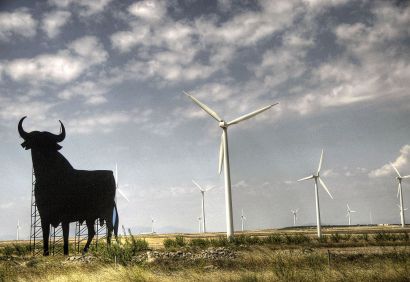The development
of renewable energies is key for the European Union to achieve a
decarbonised energy model. Wind power in Spain represents 21.9% of the
installed power in the generator park as a whole and ranks fourth in
terms of renewable generation.
Spain
is a pioneer in wind energy, so some of its wind turbines will exceed
15 years of life by 2020. The aging of these parks is a challenge for
the second country in the European Union with the largest installed wind
capacity.
According to the latest data from the AEE (Spanish
Wind Energy Association) Spain has been the second source of electricity
generation in 2018 at European level. With a total of 1,123 wind farms
spread across 807 municipalities, wind turbines avoids the emission of
25 million tons of CO2 per year, with 20,306 wind turbines installed in
Spain that cover 19% of electricity consumption. An undoubtedly
fundamental energy that places the Spanish wind power sector as one of
the most competent to achieve with full guarantees the 2030 European
objectives.
Despite good data and the competitiveness of our
country in terms of wind energy, Spain must face one of its biggest
challenges: the aging of its wind farms. Together with Denmark and
Germany, Spain must think about mechanisms to prolong the life of its
wind farms. Many of them will exceed 15 years of life by 2020.
In
this sense, development and technological innovation play a key role.
The evolution of technologies to diagnose the real state of wind
turbines, Big Data, Machine Learning, as well as improvements in
maintenance models and processes are essential to take full advantage of
existing assets, giving a greater profitability to the wind farm and a
direct benefit to the consumer.
What alternatives exist before the end of the useful life of a wind farm?
The
best known alternatives are the repowering or extend the life of the
wind turbines of the wind farm. The repowering consists of replacing
wind turbines with new, more advanced ones, in size, power and
efficiency. On the other hand, the extension of useful life is based on
extending the life of the park over the certified useful life, which
supposes an operative improvement of the existing wind turbines,
replacing some concrete components or implementing new protocols in the
operation and maintenance, with the objective of achieving maximum
safety in its operation.
There is no more or less adequate option
to decide what to do with the wind turbines once their certified
service life has been exceeded. It will depend largely on the type of
business model of each company. In terms of the future, the need to
evolve towards an intelligent maintenance model will be key to reducing
the aging of wind turbines.
Whatever the decision, there will
only be one element that will be maintained over time: security. Given
the age of the parks and the current market conditions, the need to go
to experts in the field of advice is essential.
Alberto Santos
and David Torres, Experts in Technical Consultancy in Wind Energy of TÜV
SÜD Spain affirm “According to our accumulated experience, most of the
wind turbines can continue their operation after their useful life
expires with a minor investment in repairs or replacement of components.
In addition, an evaluation of the life extension of a wind farm allows
the operator to draw a realistic picture of repair and maintenance costs
for the remaining life of their turbines. A point to take into account
in your service strategy.”

